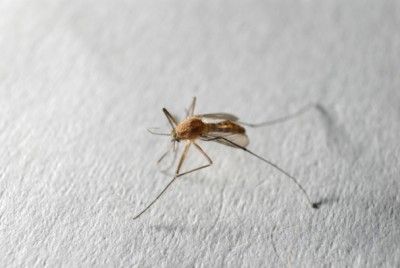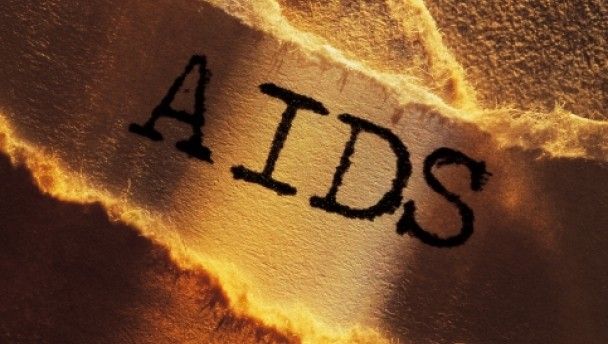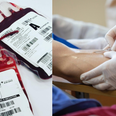Very rarely do people actually want to have serious medical conditions, and we at JOE, being no different, have compiled five you should pray you don’t get.
By Conor Hogan
1. Fahr’s Syndrome
This rare disorder was first identified by German neurologist Karl Theodor Fahr in 1930. It is characterised by abnormal deposits of calcium in certain of parts of the brain including the cerebral cortex.
What are the symptoms?
These include the deterioration of motor functions, eye problems (including glaucoma), seizures, stiff limbs, eye problems, dementia, slurred speech and involuntary movements. It has many features of Parkinson’s Disease, including rigidity, tremors and a mask like facial appearance.
How do I get it?
It’s a genetically inherited condition. If both parents possess the recessive Fahr’s gene, each of their children will have a 25 per cent chance of having the condition.
Will I die?
The prognosis isn’t good. People with the condition will generally die following progressive neurological deterioration.
The treatment
There is no cure or standard treatment for the condition.
2. Giardiasis

A highly contagious diarrheal intestinal infection caused by the microscopic parasite Giardia intesinalis. It affects two million people in the United States alone.
What are the symptoms?
It causes nausea, stomach cramps, flatulence and diarrhoea. These symptoms can last up to six weeks.
How do I get it?
It is commonly caught by swallowing contaminated water or by coming into contact with the faeces of an infected person. It can also be picked up from surfaces, however, as its protective outer shell allows it to live outside a body for a long time.
Will I die?
There is a danger of dehydration if you don’t take on plenty of fluids. The risk of a fatality is relatively low, though it can be deadly for people with poor immune systems or the elderly. The risk of spreading the disease to others is high, so it is important for the infected to wash their hands and not use swimming pools.
The treatment
As long as the sufferer maintains impeccable hygiene, the infection should disappear.
3. Human Immunodeficiency Virus (HIV)
The retrovirus that causes Acquired Immunodeficiency Syndrome (AIDS), a condition that affects 0.6 per cent of the world’s population and claims well over three million deaths a year.
What are the symptoms?
There are no symptoms at first, but a person might pick up something similar to the flu within six weeks of being infected. There are four stages; the first of which is usually asymptomatic.
The symptoms of second stage (acute infection), which lasts for 28 days on average, include a fever, a rash, muscle pain, a sore throat and swollen lymph nodes. The third or latent stage can last between two weeks and twenty years, during which time your white blood cells will be attacked.
Those infected suffer from chronic fatigue and night sweats with body temperatures sometimes exceeding 100 degrees Fahrenheit. Other symptoms include headaches and diarrhoea. The fourth stage then is AIDS.
How do I get it?
The four main ways of catching it are contaminated needles, unsafe sex, vertical transmission (caught off the mother during pregnancy) and through drinking infected breast milk.
Will I die?
If it progresses to AIDS, the condition is terminal.
The treatment
There is no cure. Highly Active Antiretroviral Therapy (HAART) focuses on suppressing symptoms for as long as possible. It can massively reduce levels of the virus, prolonging life up to almost normal expectancy.
4. Ivemark Syndrome
A rare genetic disorder characterised by organs in the wrong place and poorly-formed cardiovascular system. For instance, one girl in England was born with back to front liver, a hole in her heart, two left lungs, her stomach on the wrong side and five spleens.
What are the symptoms?
There are many including breathing difficulties, reduced pulmonary blood flow, growth retardation and finger and toe clubbing.
How do I get it?
It is a hereditary condition brought on because of deficiency at birth of genes which are yet to be identified.
Will I die?
It has a high mortality rate as it can cause multiple systemic thrombosis, bacterial infection and heart failure.
The treatment
The underlying cardiac abnormalities can only be relieved through surgery.
5. Japanese Encephalitis
A virus that attacks the central nervous system most prevalent in South East Asia. There are up to 50,000 reported cases a year.
What are the symptoms?
You may develop stiffness of the neck, severe lethargy and convulsions. You may also fall into a coma or experience spastic paralysis.
How do I get it?

The virus is carried by the mosquito Culex tritaeniorhynchus in many Asian countires including Japan, Taiwan, the Koreas and Thailand during the summer and Autumn months.
Will I die?
The fatality rate is quite high – 30 per cent of people who catch it will die. A further 30 per cent will be left paralysed and with brain damage.
The treatment
There is no effective treatment.
For JOE’s A to E of illnesses click here.
LISTEN: You Must Be Jokin’ with Aideen McQueen – Faith healers, Coolock craic and Gigging as Gaeilge





















































